Facial cleansing is one of the most popular salon procedures in cosmetology. Its popularity is simply explained - deep cleansing allows you to use deep processes to accelerate the regeneration of the skin. As a result, you can significantly rejuvenate the skin, optimize the metabolic function and improve the functioning of the sebaceous glands.
Advantages and disadvantages
Probably, there is no such woman who would not do home care and all kinds of peels. These procedures allow you to slightly improve the appearance, so many resort to them in the hope of saving significant amounts on visits to beauty salons. However, this is a common misconception - to do home scrubs will not work if you have a clearly expressed problem.

Cleaning procedures in salons on professional equipment involves a number of manipulations:
- consultation of an experienced specialist;
- analysis of problems and their causes;
- deep cleaning;
- exfoliation;
- effective removal of comedones and removal of sebaceous plugs;
- the use of masks;
- massage.


Of course, you can cope with all these tasks on your own, but at the same time there remains a high probability of all kinds of complications associated with a violation of technology.
Without special knowledge, it is impossible to correctly identify the cause of the problems, and this, instead of the expected improvement, can only worsen the general condition of the skin.
In order to avoid unnecessary consequences, it is advisable to contact special salons that provide cosmetic services.

There are plenty of pluses to contact specialists.
The main advantage of cosmetic procedures by a specialist is the ability to reduce the number and severity of comedones. It's no secret that the vast majority of people have ugly black dots. Modern industry offers a wide selection of masks, however, manual cleaning remains the only truly effective tool.

Turning to a professional, you will note many advantages.
- Quite often, sebaceous plugs are localized deep in the skin pores, if they become too dense, then squeezing them out without leaving a scar will not work under conditions of home cleaning, while a classy specialist quickly and without consequences cleanses the most problematic areas of the face: wings nose, forehead, and cheeks.
- Only a professional is familiar with the exact technique of isolating comedones, which significantly reduces the risk of various inflammations that often occur in a situation if part of the cork remains in the pores. The specialist uses a special tool that regulates the degree of depression, so dark and red spots do not form on the skin - this problem often occurs in women with hypersensitive skin after poor-quality extraction of corks.
- In salons, care is used, which greatly facilitates the removal of unaesthetic sebaceous plugs manually. Apply chemical as well as vacuum cleaning and other techniques.
- The specialist uses magnifying glass lamps, so he can see everything, even the smallest traffic jams, gets rid of them before the problem worsens.

Lovers of chemical peels will certainly appreciate the effect that is achieved with the help of salon products. Of course, high-quality gels containing salicylic or glycolic acid can be bought at any store, but their effectiveness is too low, since manufacturers primarily focus on the safety of home remedies.
With the illiterate use of concentrated drugs, chemical burns often remain.
Salon products at a high concentration have a low pH - less than 3.0. If you use these products on your own, the skin can be severely damaged, but in a salon, such preparations show a good result in the fight against acne, age spots, fine wrinkles and clogged pores.

Separately, it should be said about the concentration - the proportion of active substances in professional products can reach 70%, therefore, their use should take place only under the supervision of an experienced dermatologist, otherwise the recovery period may stretch for many months.
With pronounced pathologies, cosmetologists resort to microdermabrasion - that is, effective mechanical peeling, with which they clean the pores using a diamond head. Such a procedure not only deeply cleanses the pores, but also significantly evens the complexion.
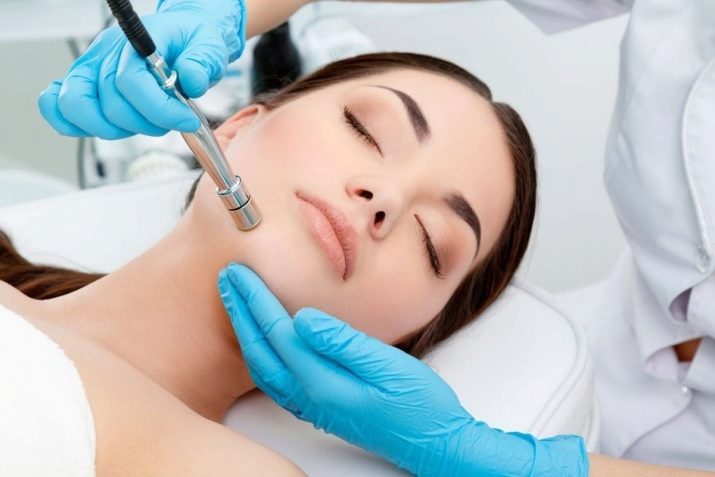
However, do not forget that any cosmetic procedure can have adverse effects. Typically, a beautician talks about a skin reaction before starting work.
Immediately after cleaning, you may feel some discomfort, which is rather unpleasant, but generally consistent with the normal skin reaction to external intervention.
- Redness - Especially often they occur after manual cleaning. As a rule, their severity is reduced by special masks, and after 1-2 days it completely disappears. The appearance of redness is associated with great pressure on the skin, especially if comedones or blackheads were too deep and dense. For several hours, the face often looks pink, however, if the skin gives the impression of soreness - this is an occasion to beware.
- Rash - This is another valid reaction. It is connected with the fact that during the procedure all metabolic processes are activated in the skin, and the pores begin to intensively get rid of impurities.During any cleaning, no cosmetologist has the goal of squeezing the cork at any cost, since the bulk of the cork comes out on its own. When the exacerbation goes away, the skin condition improves significantly.
- Tightness - this feeling is not uncommon after chemical peels, it is explained by the effect of acids on the skin and appears even when moisturizers were applied at the end of the procedure. Moreover, if the cleaning was deep, even peeling may appear. This will pass, it is important to simply adhere to the doctor’s recommendations for skin care after manipulations and, of course, do not tear off the crusts and try to get rid of them yourself.


As a rule, these manifestations pass rather quickly, but sometimes the consequences of cosmetic cleansing can be much more unpleasant.
If the redness does not disappear within two days, then you need to consult a dermatologist.
Severe swelling or redness, as well as a burning sensation after chemical cleansing, can be a signal that the procedure was too intense.
The appearance of a tumor in the neck, cough or spots of a saturated red color indicate an allergic reaction to the components of the care products.

Excessive rashes often indicate non-compliance with hygiene standards, and also occur with improper selection of care products.
To avoid such consequences, you should only contact salons with a good reputation and trusted professionals.

Methods
There are several types of cosmetic cleansing.

Mechanical
This is a very effective, although as evidenced by reviews, painful procedure. It involves extracting the contents of the pores in a simple manual way. Such an effect is recommended in those cases when the skin has deeply located dense comedones. Many believe that her time has passed, however, this type of care is in high demand.

Chemical
This manipulation involves exposure to the skin of special fruit acids in different concentrations - they dissolve all existing impurities and effectively grind the upper coarse layer of the skin. Usually they do not cause pain and discomfort.

Ultrasound
The application of this method is based on the use of a scraper - a special device that, acting on the skin, helps push out the pore contents under the influence of high-frequency sound vibrations.

Vacuum
The effect that is observed when using this procedure can be compared with the operation of a vacuum cleaner - a special device is brought to the problem area on the skin, and it literally sucks out all the dirt from the deep layers. This method is very effective, however, it is suitable mainly for a small cleansing.

Laser
This procedure is also carried out on a separate small area of the skin, and not on the entire surface of the face. Due to the action of the laser beam, the upper layer of the skin is thinning, which prevents the further formation of sebaceous plugs in the expanded pores.

Disincrustation
This procedure can be compared with electrophoresis by the mechanism of action - with the help of microcurrents, active substances are driven into the skin, which effectively break down all the blockages and bring them out.

Indications
Our skin is constantly exposed to pollution, we can safely say that in all its life it literally absorbs kilograms of various types of dirt - dust, street exhausts, rainfall of low-quality water, as well as traces of makeup - this is not a complete list of the most common sources of garbage that can be replenished by any specialist cosmetologist.
The result of this effect is the deterioration of the skin: the pores get clogged, the color becomes more dull, the severity and number of wrinkles increase, which is why experts recommend from time to time to resort to a full facial cleansing, it is optimal to conduct it monthly.
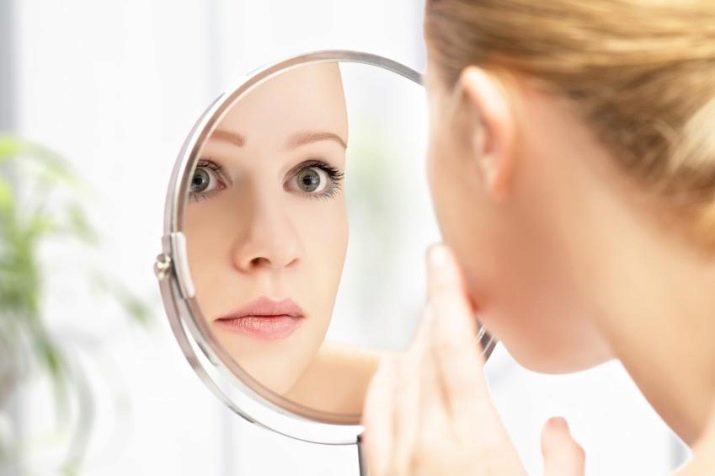
Indications for such procedures may include:
- skin rashes;
- faded complexion;
- enlarged pores;
- circulatory disorders in the skin;
- excess work of the sebaceous glands.

All types of cleansing effectively relieve dead cells, while releasing new ones - clean and fresh.
Cleaning can rejuvenate a woman before her eyes, reduces the severity of wrinkles by 30-40%, reducing the creases on the forehead and crow's feet that upset every woman who has crossed a 30-year milestone.
High-quality cleansing allows the skin to fully breathe - thanks to the procedures it improves oxygen access to the cells and tissues of the skin, which is very useful not only for its appearance, but also for the well-being of the person as a whole.

Contraindications
However, cleaning has a number of significant contraindications. Such manipulations are not recommended for some categories of women.
The procedure is not prescribed for girls under the age of 16, for adolescents use other methods of combating youthful acne, characteristic of children when entering puberty. In addition, the procedures are also not suitable for people with serious chronic diseases such as diabetes, hypertension, as well as asthma, mental and epileptic disorders and the like.
With pronounced inflammatory phenomena on the skin (herpes, psoriasis, progressive and weeping eczema), cleansing is unacceptable. The same applies to patients with purulent neoplasms and vascular mesh.
Under the full supervision of physicians, women and men with thin and very sensitive skin should have cleansing procedures.


Keep in mind that even if you do not have any of the listed pathological conditions, cosmetic cleansing should still be carried out with the participation of doctors and on reliable equipment. Before starting any procedures, any professional cosmetologist carefully examines the problem, and often additional tests are required to identify the depth of the problem and prescribe the most gentle, but effective drugs.

Preparation
Each cosmetic procedure should be preceded by a special preparation, which increases its effectiveness and minimizes all unpleasant consequences. In this case, different types of influences suggest special preparatory methods.
During mechanical cleaning, first of all, they cleanse the face of dirt and cosmetic residues, for this purpose, preparations corresponding to the type of skin are used. If their use does not give 100% of the result, then the beautician additionally applies a cleansing light mask.

At the next stage, the so-called vaporization is carried out, which involves holding a steam bath or applying a warming gel - such manipulations are aimed at softening the coarsened layer of the skin, which is one of the key factors in the effectiveness of the cleaning.
Dry cleanings with acids are peeling procedures, therefore, at the preparation stage, for some time you should refrain from visiting beaches and a solarium, sunbathing and applying strong exfoliating products to the skin.

Immediately before the procedure, the skin is cleaned.
Ultrasonic cleaning, like everyone else, begins with makeup removal, after which masks with the effect of cold steaming are applied to the skin.
Vacuum cleaning is based on the absorption of dirt from the pores, so in order for the cleaning to be as effective as possible, it is necessary to expand them - for this they resort to steaming with steam or special gels.
Preparation for laser cleaning differs from the others in that, in preparation for the procedure, any steaming is strictly prohibited for at least three days before cleaning. In addition, at this stage it is forbidden to resort to any chemical effects on the skin, namely: one should refrain from applying aggressive masks and creams, as well as peels.
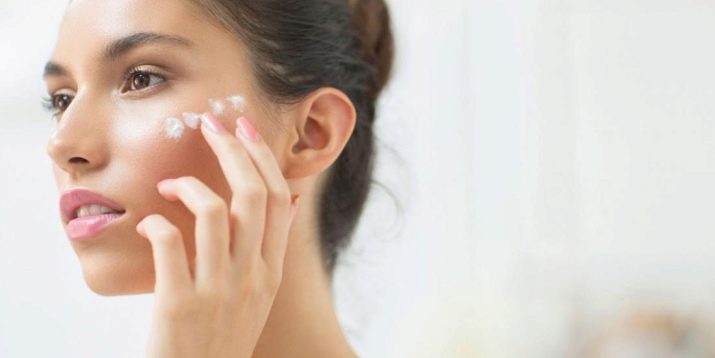
But in case of disincrustation, steaming is not done for another reason - just melting, sebum can change the structure and composition of plugs, and the effect will be less effective.
Only a cosmetologist can determine the features of preparation for cleaning at a preliminary consultation after analyzing the problem and choosing exposure methods.

Carrying out
After preparation in the salon, the beautician conducts a direct cleaning.
The technology and sequence of actions in this case varies depending on the type of exposure.

Mechanical cleaning
Basic cleaning is a rather uncomfortable and even painful procedure. At this stage, the cosmetologist proceeds to manually clean the pores using a spoon of Uno and napkins.
The procedure takes about 20-30 minutes, after the specified time the skin cools, and the pores begin to narrow - in this case, the effect becomes even more uncomfortable.
If the skin is very problematic, then two or three procedures may be necessary, with significant clogging of the pores, the specialist uses a magnifying glass - it is necessary in order to examine all areas where contaminants are not so noticeable during a quick examination. Comedones are isolated from the pores by pressure, and acne is eliminated by piercing, so as not to allow it to rupture and pus to enter the deeper skin layers.
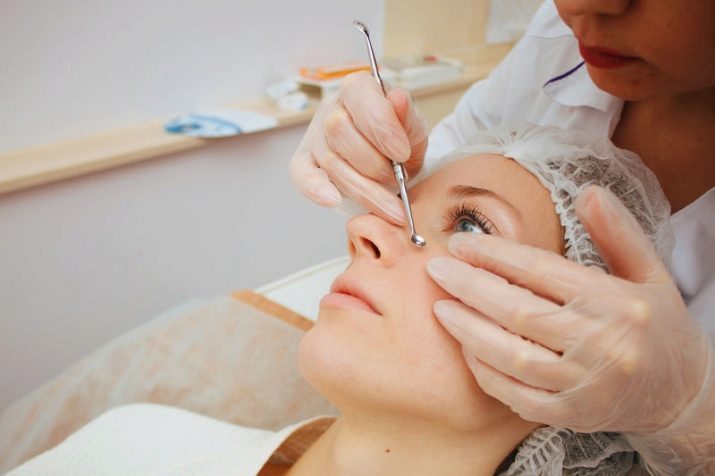
Dry cleaning
With a similar cleaning method, a solution of fruit acids is applied to the treated skin. The drug is left on the skin for some time, after which it is washed off with special means. Depending on the severity of the problem, compositions of various concentrations are used, so peeling can be superficial or deep.
During the procedure, the specialist tries to avoid too inflamed areas, since in this case there is a high probability of obtaining the opposite effect, when instead of updating the keratinized layer of the skin, a severe chemical burn is obtained.

Ultrasonic cleaning
During this procedure, the cosmetologist conducts a scrubber on the skin, this effect allows you to remove the keratinous layer of the skin, remove and remove all the dirt from the clogged pores and sebaceous glands, after cleaning, all residues are immediately removed by the cosmetologist.

Vacuum cleaning
The mechanism of action of the device, which is used during vacuum cleaning, is based on the formation of negative pressure. This effect allows you to stretch the entire contents of the pores. During the manipulations, the specialist conducts circular movements along the face - such an apparatus effectively replaces mechanical cleaning, although it can only be used for surface contamination.

Laser cleaning
Immediately before the laser procedure, an antibacterial solution is applied to the skin, the laser is driven only along the treated surface. Efficiency applies only to the upper layers of the skin, so you can not be afraid of damage that can affect the cellular level. The principle of the laser is that it creates microdamages on the surface, which contribute to the rapid detachment of dead cells.
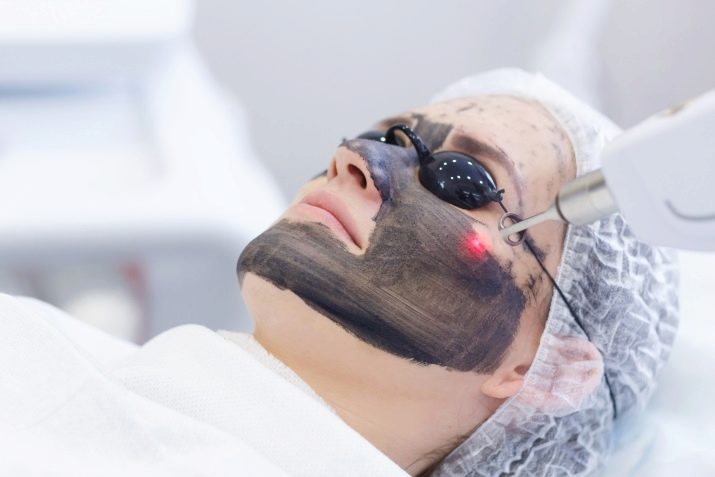
Galvanic cleaning
Disincrustation involves the use of a special apparatus with various nozzles that act on the skin by microcurrents, as a result of which all sebum dissolves, and the impurities change their structure and are pushed out.
Most often, this option is used in combination with vacuum cleaning, this combination is considered the most sparing, but it is very effective.

Care
Any cleaning performed in a beauty salon shows visible results, however, in order to maintain them for a long time, you should properly care for the skin after each procedure. At this moment, hydration and nutrition are of particular importance, and masks for easy cleansing will not be damaged. Everything that is required in the recovery period, says the beautician at the final consultation, and in the salon itself, mandatory manipulations are performed.
At the end of mechanical cleaning, you need to calm the skin, it is best facilitated by white clay masks, as well as darsonvalization. In some cases, the doctor conducts cryomassage, which quickly narrows the pores.

After a chemical, especially in-depth, procedure, application of a dermatological cream is required, in small areas “Panthenol” and “Bepanten” give good effectiveness, and if the cleaning was carried out on the entire face, the remedy is prescribed by the doctor based on the skin condition before and after the salon procedure.
Ultrasonic cleaning does not require any special measures after the end of the procedure, so you can take care of it with standard products that you resort to daily.
After vacuum exposure, it is very important to return the pores to their original state. For this, the doctor, as in the case of manual cleaning, most often resorts to cryomassage and Darsonval.
After powerful laser cleaning, the skin is especially susceptible to adverse external factors, so the doctor applies a special protective composition to it.
In case of disincrustation, the face should be thoroughly cleaned of dirt that has been brought out.

Tips
Even the most competently performed procedure will not be able to guarantee a flawless effect when the rules for skin care are not followed in the medium term.
Within 5-7 days after cleaning, do not use scrubs and peels, since exposure to particulate matter can severely injure already damaged skin areas.
It is better to replace the soap with gels selected according to the type of skin.

It is better to postpone playing sports for a week or two - during exercise, sweating increases, which often leads to rashes on a cleaned face.
All cosmetologists know that women, especially those who have been cleansed for the first time, quite often have doubts that the doctor removed all the impurities and comedones from the pores of the skin, so they resort to steam baths, which they hope to remove the remains of sebaceous plugs from the depths of skin tissues.
This should not be done - it is better to trust the doctor, he will do everything right, otherwise patients will only increase blood flow to the skin by their initiative, causing small hemorrhages.

By the way, with a visit to saunas and pools it is also better to wait a bit.
Do not use makeup for 3-5 days after cleaning. If make-up is absolutely necessary for you - limit yourself to decorating eyelashes, eyelids and lips, avoid using foundation creams and blush.
Try to drink as much water as possible - hydration should be not only external, but also internal.
Immediately after cleansing, you should not do such procedures as lifting with gold threads and hair removal on the face.
Stick to these simple rules, and your skin will respond to you with radiance, youth and an impeccable look.
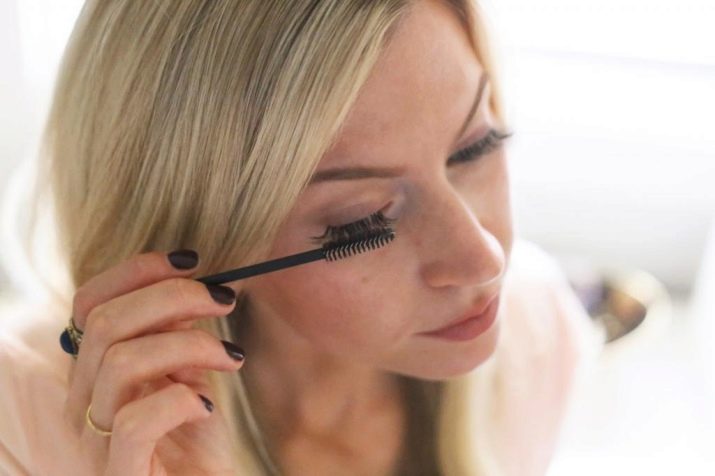
You can learn more about facial cleansing in this video.










